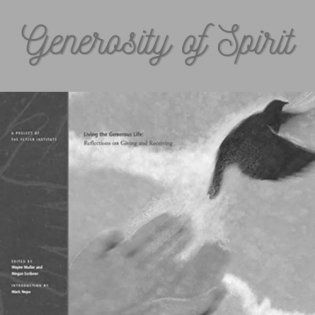Gifts Disrespected
There are times when a person learns that it is better not to give a generous gift at all if it will be disrespected by the receiver. There are also times a person may realize too late that there is a cost for bad behavior.
The learner will:
- identify the historical and geographic settings of folktales.
- identify the message and connections to philanthropy.
Youth access to these folktales (Learning to Give has permission to make these folktales available online to readers):
- "A Flowering Tree." Ramanujan, A. K. A Flowering Tree and Other Oral Tales from India. Berkeley London: University of California Press, © 1997. Used with the permission of University of California.
- "The Magic Bear." Millman, Lawrence, gathered and retold by. A Kayak Full of Ghosts: Eskimo Tales. Santa Barbara: California: Capra Press, ©1987. p. 180-181. Used with the permission of Lawrence Millman.
Instructions
Anticipatory Set:
Discuss examples of times they shared something they treasured with someone else and it was broken or made fun of. Listen to stories of how it feels for something treasured to be disrespected.
The featured folktale is an Indian folktale told originally in the Kannada language, which is spoken in the state of Karnataka. On a map, locate Karnataka in southwestern India and give its absolute location (longitude and latitude). Give its relative location.
Read "A Flowering Tree" together and discuss the message and connection to philanthropy.
- Talk about the sequence of events in the story.
- Assign characters from the folktale to small groups to analyze (mother, older sister, younger sister, queen, king’s son, king, king’s younger daughter, silly girls, cart-driver, king’s older daughter, palace servants and maids). Analysis: What was the role of this character in the story? Why did the character act as they did? What was the best/worst characteristic of this character? Did this character show a "generosity of the spirit" or an absence of it?
- Read again the last two sentences of the folktale which contain the punishment for the King’s daughter. It was a severe punishment in which no forgiveness is given and there is no chance for the daughter to repent and mend her ways. Discuss the fairness of it or alternatives.
- What is the environmental symbolism in the folktale?
Read the Inuit folktale "The Magic Bear" together and discuss the message and connection to philanthropy.
- Where is Inuit land? Discuss its location and people.
- Most cultures believe that the gift of a child is very precious and necessary for a good life. What was the old man’s character flaw that caused the couple to lose their child in the end?
- In this story, as in "A Flowering Tree," the punishment was swift and absolute with no chance to beg forgiveness. Why was this severe punishment used as the conclusion of the story? Could the old man have changed had there been a different punishment?
Philanthropy Framework
-
Strand PHIL.II Philanthropy and Civil Society
-
Standard PCS 07. Skills of Civic Engagement
-
Benchmark HS.4 Analyze and synthesize information to differentiate fact from opinion based on the investigation of issues related to public policy. Discuss these issues evaluating the effects of individual actions on other people, the rule of law and ethical behavior.
-
-
